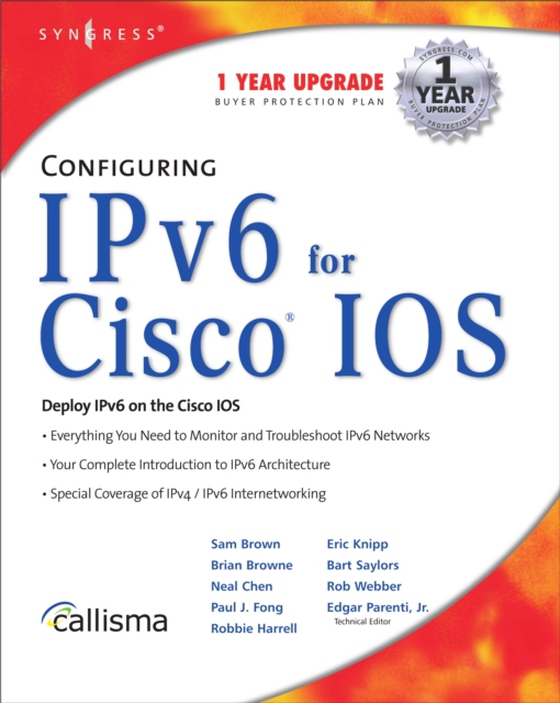
Configuring IPv6 For Cisco IOS e-bog
429,94 DKK
(ekskl. moms 343,95 DKK)
"e;By building IPv6 into Cisco IOS software, we are enabling continued growth of the Internet and its expansion into new applications and capabilities in a way that maintains compatibility with existing Internet services."e; -- Stephen Deering, Cisco Fellow and lead designer of the protocol Internetworking Protocol (IP) addresses are the unique numeric identifiers required of every dev...
E-bog
429,94 DKK
Forlag
Syngress
Udgivet
16 august 2002
Længde
520 sider
Genrer
Internet: general works
Sprog
English
Format
pdf
Beskyttelse
LCP
ISBN
9780080476766
"e;By building IPv6 into Cisco IOS software, we are enabling continued growth of the Internet and its expansion into new applications and capabilities in a way that maintains compatibility with existing Internet services."e; -- Stephen Deering, Cisco Fellow and lead designer of the protocol Internetworking Protocol (IP) addresses are the unique numeric identifiers required of every device connected to the Internet. Two years ago, in response to the exponential increase in demand for new IP addresses, the Internet Engineering Task Force finalized its revision on IP addressing, called IP Version 6 and key hardware vendors such as Cisco and major Internet Service Providers like AOL announced plans to migrate to IP Version 6. That is now happening. Cisco Systems began incorporating Internet Protocol version 6 (IPv6) in its Cisco IOS Software in June, 2001. Cisco is currently the only major networking vendor to deliver IPv6 across multiple platforms. This book provides complete coverage of IPv6 strategies, configuration scenarios, and techniques to successfully deploy an IPv6 addressing and subnetting scheme on your network. Increasing the IP address size from 32 bits to 128 bits Supporting more levels of addressing hierarchy Supporting an increased number of addressable nodes Supporting simpler auto-configuration of addresses Improving the scalability of multicast routing by adding a "e;scope"e; field to multicast addresses Use a new "e;anycast address"e; to send a packet to any one of a group of nodes
 Dansk
Dansk

